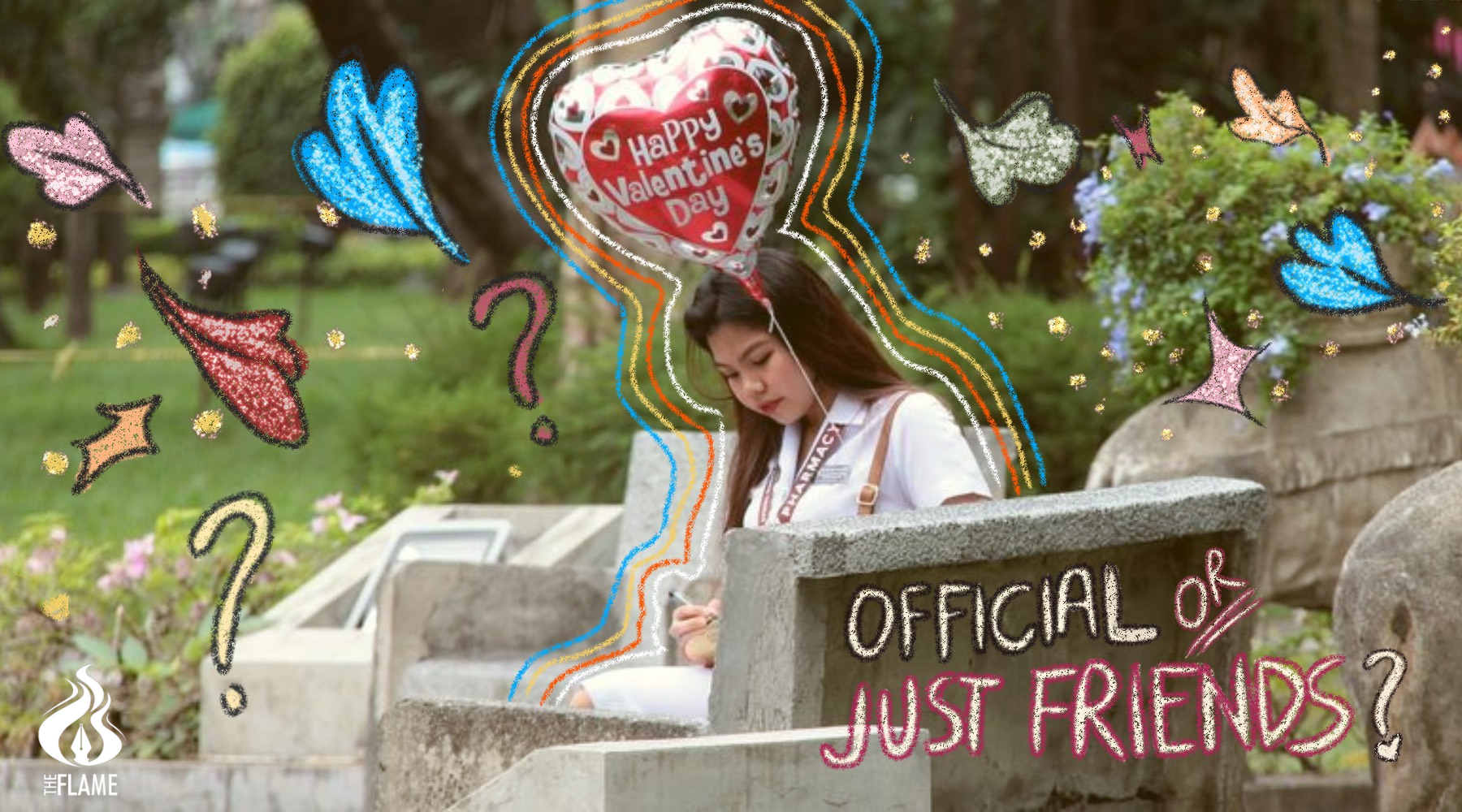
CRAVING INTIMACY without commitment? Welcome to the confusing world of “situationships.”
This growing trend in modern dating involves seemingly casual connections that often simmer on the backburner, leaving individuals with unspoken expectations and blurred boundaries.
Situationships refer to a conscious connection between two people, but stubbornly without the “boyfriend” or “girlfriend” label. The Cambridge Dictionary defines it as a bond between two people that goes beyond friendship but falls short of a committed relationship.
Literature junior Mat (not his real name) and communication sophomore Raf (not her real name) know how strangers turn to more than friends all too well. While their experiences with situationships vary, both Mat and Raf share a common denominator in their encounters – they cannot commit to a relationship yet due to their emotional baggage, personal conditions and unresolved differences. So they opt for a non-committal “romance,” if it can even be called by such a name.
Gray area
Each situationship offers the joys of connection and the thrill of exploration. Yet, they can also be fraught with confusion, ambiguity and even heartbreak when emotional investment clashes with unvoiced expectations.
Despite directly expressing romantic desires, both Raf and Mat maintain “open ” situationships, allowing for intimate conversations with different people simultaneously.
Reflecting on her four-month on-and-off situationship experience, Raf claimed she felt genuine love, not just mere infatuation.
“He told me that he wanted all his firsts in college, like for example, getting (a) tattoo, or his first birthday party in college, to be with me,” she said.
“He made me listen to his favorite songs, and he would sing to me all the lines that would make me fall in love.”
When asked about her desire for commitment, Raf’s answer revealed a disconnect: “Yes, on my side (I was ready). But he didn’t want (to commit). He said he wasn’t there yet.”
Mat found that situationships offered intimacy and connection without the weight of long-term commitment.
“Long-term relationships are a lot of work, dedication, time, commitment, and a myriad of other things,” he said, hinting at personal priorities that might have made commitment challenging.
“It’s difficult to keep up with these alongside all the other personal stuff someone may have going on.”
Social media fad?
UST Department of Psychology instructor Kiana De Castro said people in situationships are not actually in love. She noted that situationships lack the key ingredients of “love” as stated by Robert Sternberg’s Triangular Theory: passion, intimacy and commitment.
The rise of situationships, de Castro pointed out, was fueled by social media, making it a phenomenon that aligns with the “fad” narrative due to its sudden popularity and the lack of psychological theories backing it up.
“It’s not yet scientific, but it is a trend… more of a fad right now in the creation of relationships,” the psychologist said.
De Castro sees situationships as potentially evolving into a new social norm, influenced by previous relationship labels and amplified by social media.
According to her, the set-up can be traced back to ‘tanan,’ a Generation X concept in Filipino culture wherein lovers elope and live together without parental consent. Millennials then embraced the concept of “mutual understanding” or “MU,” which is characterized by an undefined romantic connection that often lacks physical intimacy.
“During our parents’ time, the trend was ‘tanan.’ Eventually, as time went by, ‘tanan’ lost its popularity. During our time, the popular label was ‘MU,’ which was around the [late] 20th century already.” de Castro said.
“[In] your current generation, situationships emerged. So it’s kind of a social construct that has been forming,” she added, suggesting that situationships reflect changing societal norms and values, particularly among young adults.
Challenging traditions
While there are instances when love fuels situationships, de Castro said the emergence of the set-up reflects deeper societal shifts, especially in Filipino culture.
She said the phenomenon showcases a move from collectivism to individualism that mirrors Western influences, where young adults prioritize independence and redefine traditional dating norms. This can manifest as a “liberal engagement” in uncommitted relationships, challenging some Asians’ expectations.
However, De Castro pointed out that there is a gender disparity between women and men in situationships. She explained that women often face harsher judgment for intimacy, while men are usually praised for being intimate, reinforcing patriarchal notions of them as conquests.
Mat and Raf offer contrasting perspectives on the matter. Raf associates her situationship with happiness but ultimately feels the pain of unfulfilled expectations. She would always associate it with the doubts and heartache she felt upon realizing she and the other party could never be more than friends.
However, Mat viewed his situationship as a source of mixed experiences that offer valuable insights and companionship, albeit temporary.
“These short-term connections sort of give us that glimpse into other people’s lives and situations and offer some solace that we’re not alone,” Mat said.
“I think that’s valid and has its own merits. It is definitely its own experience that should be given more credit.” F – Janssen Anne Versy Mendoza and Giannah Erin Ochoa




[…] mirrors the flexibility that individuals now demand in other areas of life. This trend is seen as a response to evolving social norms, economic pressures, and the expansion of digital communication […]